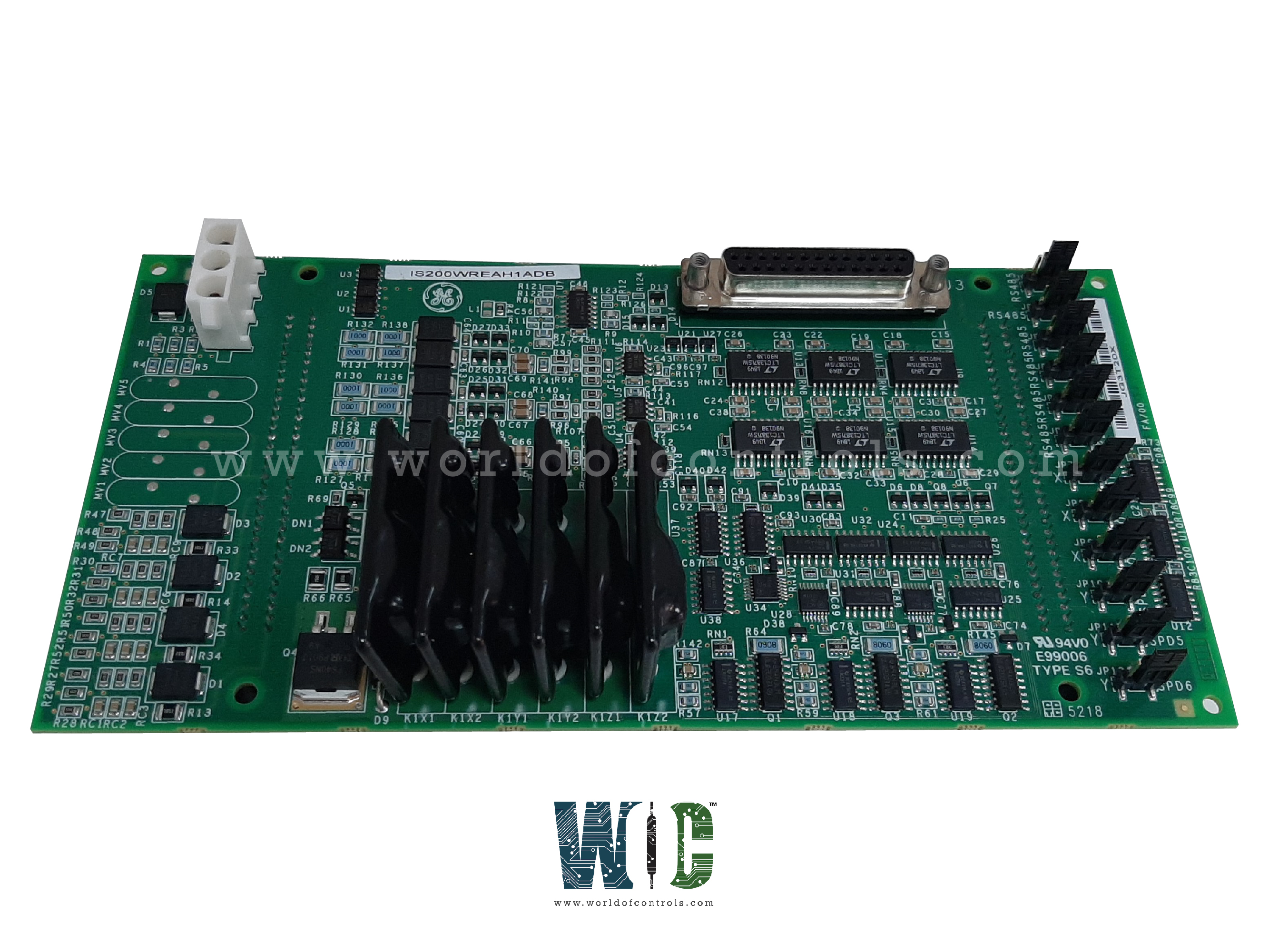
World Of Controls understands the criticality of your requirement and works towards reducing the lead time as much as possible.
IS200WREAS1B - Aeroderivative Turbine Primary Trip Terminal Board is available in stock which ships the same day.
IS200WREAS1B - Aeroderivative Turbine Primary Trip Terminal Board comes in UNUSED as well as REBUILT condition.
To avail our best deals for IS200WREAS1B - Aeroderivative Turbine Primary Trip Terminal Board, contact us and we will get back to you within 24 hours.
SPECIFICATIONS:
Part Number: IS200WREAS1B
Manufacturer: General Electric
Series: Mark VIe
Board Type: Aeroderivative Turbine Primary Trip Terminal Board
Input Voltage: 24 VDC
Input Channels: 12
Technology: Surface Mount
Trip Coil Voltage: 24 VDC
Programming: 16-bit signed integer
Power Requirements: +5 V dc
Memory: 256 MB
Breaker Inputs: 24–125 VDC
Mounting: DIN rail
Operating Temp: -30°C to +65°C
Weight: 2 lbs
Repair: 3-7 days
Availability: In Stock
Country of Origin: United States
FUNCTIONAL DESCRIPTION:
IS200WREAS1B is an Aeroderivative Turbine Primary Trip Terminal Board manufactured and designed by General Electric as part of the Mark VIe Series used in GE Distributed Turbine Control Systems. The Aeroderivative Turbine Primary Trip Terminal Board serves as a critical interface within the turbine protection system, designed to monitor and execute rapid trip commands in response to abnormal operating conditions. It consolidates various trip inputs from sensors and protection relays, processes these signals, and initiates turbine shutdown sequences to safeguard the equipment from damage. The board’s architecture supports high-speed fault detection and signal isolation, ensuring reliable turbine protection and minimizing downtime. It is engineered to interface seamlessly with turbine control and monitoring systems.
INSTALLATION:
The board should be mounted in a vibration-free, controlled environment within the turbine control cubicle. Proper electrical connections must be ensured, including power supply, trip input channels, and output wiring to the turbine trip logic system. Attention to grounding and shielding is essential to prevent electromagnetic interference. Calibration and functional testing should be performed after installation to verify correct signal processing and trip command initiation. Installation procedures must comply with safety regulations and include lockout/tagout protocols to prevent accidental energization during setup.
OPERATION:
The Primary Trip Terminal Board continuously monitors multiple discrete input signals corresponding to critical turbine parameters such as overspeed, temperature, vibration, and pressure limits. Upon detection of any fault condition, the board processes the input signals against predefined trip logic and initiates an immediate trip output signal to the turbine shutdown system. The board’s logic typically employs redundant voting mechanisms to reduce false trips. It supports manual reset and diagnostic functions accessible via the turbine control system interface, enabling maintenance personnel to verify trip causes and system integrity before resuming operation. The board ensures real-time response and uninterrupted protection throughout the turbine’s operating range.
WOC maintains the largest inventory of replacement parts for GE Distributed Control Systems, providing both new and expertly refurbished components, all backed by a comprehensive warranty. Our dedicated support team is available 24/7 to address your OEM and automation needs. Contact us via phone or email for pricing, availability, or repair services. We’re committed to keeping your systems running smoothly.
What is the primary function of the Aeroderivative Turbine Primary Trip Terminal Board?
The Primary Trip Terminal Board serves to collect and process trip signals from various turbine sensors and protection devices. It ensures the rapid initiation of turbine shutdown commands in the event of unsafe operating conditions, thereby protecting the turbine from potential damage.
How does the trip logic work on this terminal board?
The trip logic typically uses a redundant voting mechanism, such as a 2-out-of-3 logic, to validate trip signals and avoid false trips. The board processes inputs from multiple sensors and executes a trip only when the configured logic criteria are met.
What should I check if the terminal board does not initiate a trip during a fault condition?
First, verify that the input signals from sensors and protection relays are present and within expected voltage levels. Inspect wiring connections for continuity and proper termination. Confirm that the trip logic configuration matches the system requirements and that the board is powered correctly. Also, check LED status indicators for any fault or warning signals on the board.
How to isolate if a specific input channel is malfunctioning?
Use the board’s LED indicators to identify which input channels are active or in fault. Test the input wiring and connected devices individually with a multimeter to ensure correct voltage and signal integrity. Temporarily disconnect inputs one by one to observe if the fault or false trip persists.